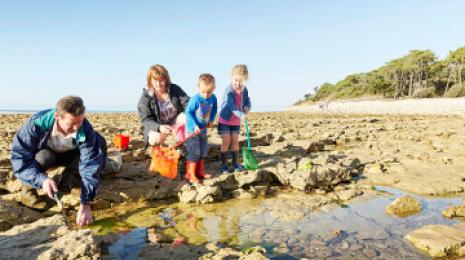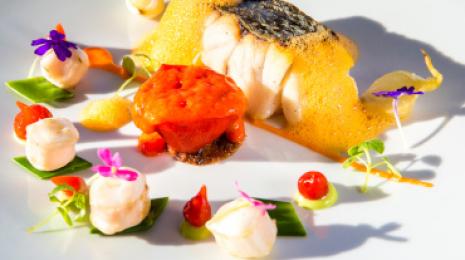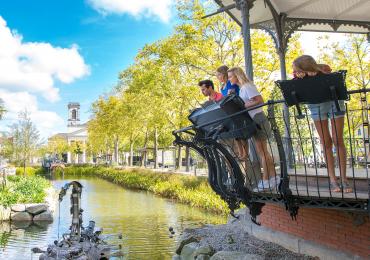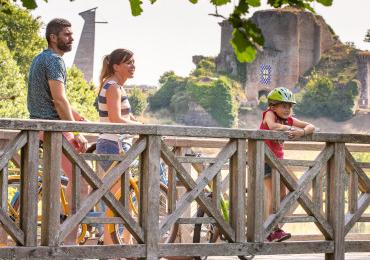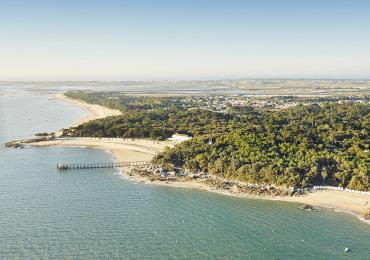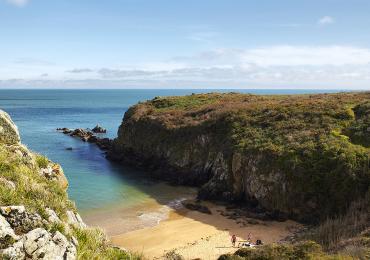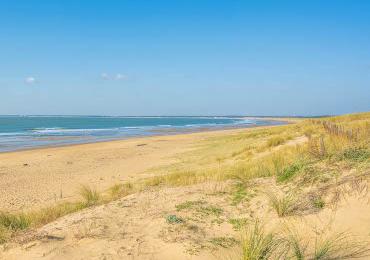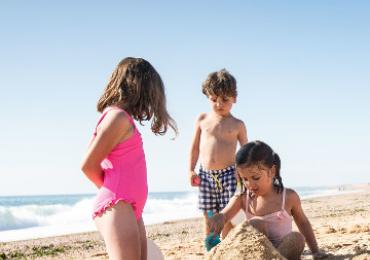The Marais poitevin and the green Venice
The Marais poitevin is one of the main assets of the Southern Vendée region. At one time, it was entirely covered by water, but thanks to the monumental work and ingenuity carried out by man, it has now become an exceptional region. It provides a wide range of activities that are all set in a magnificent green landscape also known as the Green Venice. The region has obtained numerous awards (labels) such as Regional Natural Park (Parc Naturel Régional), Great Sites of France, as well as European Tourist Destination of Excellence. The Marais poitevin is an ideal destination for slow tourism and environmentally friendly activities… canal boat trips in the green Venice, bird watching, cycling, fishing, hiking and many others…. Why not give it a try?

The Marais poitevin is a remnant of the former Gulf of Poitou and is one of the most beautiful man-made landscapes there is. A stone's throw from the marshes are picturesque villages nestled around the Mervent-Vouvant forest. The Marais poitevin is made up of 112, 000 hectares of intertwined canals and countryside. It is divided into three zones:
- the coastal zone (The Baie de l’Aiguillon, provides nourishment for man and wildlife)
- the dry marsh which is used for agriculture,
- and the wet marsh also known as "Green Venice" (an area which floods in winter.)
The Green Venice, a labyrinth of water and a majestic cathedral
Green Venice is unique in the world for its distinctive features and sheer size (28,000 hectares). An incredible maze of French canals, that have been shaped by men for generations. The local "maraîchins" farmers have dug hundreds of kilometres of ditches, small reservoirs (conches) and canals to allow water to flow more quickly. This hydraulic system was used as a means of transportation.
Today, the Green Venice is the perfect setting for a "slow tourism" experience. This exceptional site is best discovered by boat, in the refreshing shade of the emblematic tadpole ash and poplar trees that punctuate the banks of the waterways.
Did you know?
Since 2003, the French State Government has recognised the wet marsh landscape as a protected exceptional classified site. Then again in 2010 it received the “Grand site de France” label for its sustainable management efforts.
Green Venice, a storytold during a guided tour in traditional « barques »
The best way to discover this exceptional region is aboard a barque (a traditional flat-bottomed boat). Accompanied by a guide (optional), you will explore some of the most secret and authentic canals of the Green Venice, before arriving at the majestic doors of the abbey in Maillezais.
For the more adventurous, it is possible to rent a canoe, which allows you to discover different places in the Green Venice that are inaccessible to boats!



Marais poitevin jetties for some of the best French canal boat trips
To explore Green Venice's waterways, you can hire traditional boats from the following jetties:
>> Damvix jetty
>> Maillezais Abbey jetty
>> Petit Port Sauvage jetty in Maillezais
>> Gué de Velluire jetty
>> The Autize jetty in Saint Sigismond
>> The Venise Verte jetty in Mazeau
>> Capucines jetty in Maillé
Dry marshes, a biodiversity treasure of the Marais poitevin
In contrast, the dried marsh area is protected from flooding. These open landscapes of the Marais poitevin cover approximately 47,000 hectares. Rich in aquatic flora, the dry marshes offer you the opportunity to observe many mammals, such as the European otter!
The Michel Brosselin National Nature Reserve, in Saint Denis du Payré, enables you to encounter an exceptional biodiversity: hundreds of different bird species such as the black-winged stilt, the marsh harrier, the black-bellied whistling duck or the greylag goose….
The Maison du Maitre de Digues, the improvement of the Marais poitevin explained
The Maison du Maître de Digues is an emblematic place in the Marais poitevin: the water management began here, in the 17th century.
When you visit the exposition on the dykes, you will soon understand that the Marais poitevin has many different landscapes. Take a moment to watch how the dyke evolves through the seasons, listen to the sounds of the marsh, and become a "recalou" (the name given to workers in charge of cleaning the ditches) for a little while. Here, you will also learn the difference between the wet marsh and the dry marsh.
On entering the old house, transformed into an eco-museum, you will be transported back through time. Now you will discover the environment in which they lived, their different jobs and trades, as well as the everyday life of the Dyke master (Maître de Digues). An essential person, supervising the water management and maintenance of the marshes. So as you will see the Marais poitevin, is not just the green Venice !

The Marais poitevin’s canals and ditches
Expertly dug, the canals allow the water levels to be regulated. They form a network comparable to that of a road network: primary and secondary axis corresponding to intermediate ditches and discharge channels.
The Five Abbots Canal is the most famous in the Marais poitevin: dug in 1217, it bears witness to the drainage work undertaken by five abbeys in the Middle Ages. The work involved digging a large 9 km canal to drain the marsh between Chaillé les Marais and Marans.
Hydraulic structures in the Marais poitevin
A complex system of dikes and canals regulates water levels. It allows fresh water to be evacuated or contained on the marsh side and prevents sea water from entering on the coastal side. This system is the secret of the fragile balance, that has allowed humans to live on this land born from the sea, for over several generations.
The sluice gates or flood gates: it is through these gates that fresh water will escape from the marsh. They are manoeuvred naturally by the force of the water; at low tide, the water can escape while at high tide, under the pressure of the tide, the gates close and salt water cannot enter the marsh.
You can admire these impressive structures at: the Porte des Grands Greniers on the Canal du Clain or the Portes des Cinq Abbés on the Canal des Cinq Abbés where, here, the work is doubled.
The Ile d'Elle abyss : this structure was built between 1663-1664 to avoid the conjunction and mixing of water of the Vendée river and that of the Canal de Vix. The water discharged through the Vix canal should not mix with the flood water carried by the river !
Communals, reservoirs of unsuspected wealth
The communals are large natural flood-meadows dedicated to grazing with up to 250 hectares. Plants, animals and migrating birds invade the areas in large numbers. More than 100 different plant species exist there: adder's-tongue spearwort (Ranunculus ophioglossifolius) part of the buttercup family, or common hedge hyssop (officinal gratiole) ...
These meadows belong to the communals in which they are located. Local breeders graze cows and horses here against a payment to the council. The arrival of the herds generally takes place in the spring with the opening of the communal areas. They then return to their barns in the autumn before the ground gets too wet.


La Baie de l’Aiguillon, providing nourishment for man and wildlife
The Baie de l’Aiguillon is a graceful transition from the land into the sea, an intersection between fresh water and salt water, as well as with man and nature. A rare and remarkable site, whose landscape changes daily with the rhythm of the tides. At low tide it becomes a bay dominated by gigantic mud flats and at high tide almost totally immersed, confined only by man-made dikes.
The entire bay has been classified as a national nature reserve and is coveted by ornithology enthusiasts It is a veritable crossroads for migratory birds coming from Northern Europe, Siberia or Canada.
Legend has it, that mussel farming originated after the shipwreck of an Irish sailor, who needing to feed himself, tried stretching his net on a pole, to which mussels attached themselves. And thus, mussel farming was born! These mussels “Les Moules de Bouchot” are now internationally renowned due to their distinctive hazelnut flavour. The area is also favouring shellfish farming. The main attractions, being oysters, cockles, and clams.
The fishing enthusiasts, the area between Aiguillon sur Mer and Faute sur Mer is also an perfect location for fishing : plaice, seabass, sea bream and other mullets.







